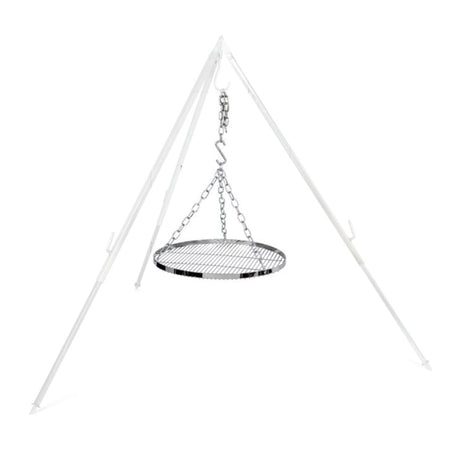Hiking is becoming increasingly popular - and for good reason. Whether it's a relaxed day hike or a challenging mountain tour, good physical preparation is the key to success. In this detailed guide, you will learn everything about the right training for hiking, from basic exercises to a structured training plan.
Table of contents
The health benefits of hiking
Introduction to endurance training
Training for hiking
Creating a training plan
Tips for sticking to the training plan
Preparing for your first hike
Conclusion
The health benefits of hiking
Hiking is one of the most holistic forms of exercise and offers amazing health benefits that are well documented scientifically. Regular hiking not only strengthens the cardiovascular system through constant aerobic exercise, but also helps to improve lung function. The rhythmic movement in nature activates almost all muscle groups and thus promotes the development of strength and endurance.
The positive influence of hiking on our mental health is particularly noteworthy. Studies show that even short hikes in nature can significantly reduce cortisol levels - the stress hormone. The combination of exercise, fresh air and experiencing nature also stimulates the production of happiness hormones such as serotonin and endorphins.
In addition, regular hiking improves bone density, which is particularly important in old age. The gentle but continuous movement is much easier on the joints than jogging on hard surfaces, for example.

Introduction to endurance training
Before you can start specific walking training, it is important to understand the basic principles of endurance training. Endurance performance is the foundation for successful hiking and largely determines how long and intensively you can hike.
An untrained hiker can cover an average of around 300-500 meters of altitude per day. With systematic training, this performance can be significantly increased - experienced hikers can easily manage 1000 meters of altitude or more. The key lies in gradually increasing the load and building up a solid basic level of endurance.
Endurance training for hiking differs from other endurance sports. Hiking is not about top speed or explosive power, but about the ability to maintain a moderate workload over a longer period of time. This is best achieved by training in the aerobic zone, i.e. at around 60-70% of your maximum heart rate.
Training for hiking
Effective hiking training is based on several pillars that complement and reinforce each other. For beginners and experienced hikers alike, it is important to consider all aspects of training - from basic endurance to strength building and coordination. Mountain hiking in particular requires a balanced mix of endurance, strength and technical skills, which you can develop through targeted training.
Build up basic endurance
Developing solid basic endurance is the first and most important step in hiking training. This foundation will allow you to cover longer distances while conserving energy for special challenges such as inclines or difficult terrain.
Start with regular walks lasting 30-60 minutes . Slowly increase the pace and length of the units. Nordic walking is also very effective, as it trains the typical walking pole technique. You can also incorporate cycling or swimming into your training - both sports train your endurance without putting too much strain on your joints.
The basis for successful hiking is good basic endurance. Start with:
- Regular walks (30-60 minutes)
- Light jogging or Nordic walking
- Cycling at a moderate pace

Strength training: legs, core and back
Targeted strength training is essential for safe and enduring walking. The focus here is on the legs, core and back. A strong core forms the center for all movements and is particularly important when carrying a rucksack.
Exercises such as squats, lunges and climbing stairs are particularly effective for the leg muscles . You can strengthen your core muscles with planks, back extensions and side planks. It is also important to train the often neglected calf muscles, which are put under a lot of strain when walking uphill.
Perform the strength exercises in a controlled manner and with the correct technique. Start with 2-3 sets of 12-15 repetitions and gradually increase the intensity.
Targeted strength training strengthens the muscles relevant to walking:
- Squats and lunges for the leg muscles
- Planks and back extensions for a stable torso
- Calf raises for more stability when walking uphill
Coordination and balance exercises
The importance of coordination and balance is often underestimated when hiking. Especially on uneven terrain or descents, these skills are crucial for your safety. Good balance also helps to save energy and avoid falls.
Regularly incorporate exercises such as the one-leg stand into your training. Vary the surfaces and close your eyes at times. Balance on lines or use a coordination ladder for more complex exercises. Yoga exercises can also be very helpful as they train balance and body awareness.
Good balance is particularly important when hiking in the mountains:
- One-legged stand on various surfaces
- Balancing on a line
- Coordination ladder exercises

Stretching exercises for more flexibility
Good flexibility is essential for efficient and injury-free hiking. Regular stretching not only improves your range of motion, but also helps with recovery after training.
Focus particularly on stretching your calves, thighs and hip flexors. These muscle groups are put under a lot of strain when hiking. Perform the stretching exercises gently and without springs, holding each position for 20-30 seconds.
Regular stretching prevents injuries and improves mobility:
- Calf stretch
- Hip flexor stretching
- Thigh stretching
The right nutrition and hydration
A balanced diet and adequate hydration are fundamental to successful hiking training. Make sure you eat a balanced mix of carbohydrates, proteins and healthy fats. Carbohydrates provide the necessary energy for long hikes, while proteins are important for muscle recovery.
Hydration is particularly important. A high-quality vacuum flask is indispensable here. We naturally recommend our Petromax vacuum flask! It keeps drinks at the perfect temperature even on long tours and is robust enough for any terrain. You should drink at least 0.5 liters of liquid per hour of hiking, and more if the temperatures are warm or the intensity is high.
Create a training plan
Developing a structured training plan is the key to successful hiking training. Awell-thought-out plan takes into account your current fitness level, your personal goals and the time frame available. It is important to divide your training into different phases and gradually increase the intensity.
Phase 1: Laying the foundations (4-6 weeks)
The first phase of training lasts 4-6 weeks and serves to build up basic fitness. In this phase, regular moderate activity is more important than high intensity.
Your weekly plan should include the following elements:
- 30-45 minutes of endurance training 2-3 times a week
- 2x weekly strength training
- Coordination training once a week
- At least one day completely for regeneration
Phase 2: Increase intensity (6-8 weeks)
After building up the basics, a 6-8-week phase with increased intensity follows. Now you can extend the duration of the sessions and increase the load.
Your extended training plan now includes
- 60-90 minutes of endurance training 2-3 times a week
- 2x weekly intensive strength training
- 1x weekly longer hike with increasing distance
- Continue to allow sufficient recovery time
Tips for sticking to the training plan
The consistent implementation of a training plan requires discipline and good organization. Set yourself realistic intermediate goals and document your progress. A training diary can be very motivating.
If possible, look for training partners - training together is not only more fun, but also increases commitment. Stay motivated even in the event of minor setbacks and adapt the plan to your personal situation if necessary.
Everything you need to stay motivated at a glance:
- Set yourself realistic intermediate goals
- Train with like-minded people
- Document your progress
- Stay motivated even with minor setbacks
Preparing for your first hike
The right preparation is crucial for the success and enjoyment of your hike. In addition to physical training, equipment plays a key role.Well thought-out equipment not only increases comfort, but is also an important safety aspect. Novice hikers in particular should take the time to choose the right equipment and test it extensively before embarking on their first major tour. Even experienced hikers regularly check their equipment and adapt it to the requirements of the planned tour.

The right equipment
Choosing the right equipment is crucial for safety and comfort when hiking. It is best to invest in high-quality hiking boots with good support and sufficient toe room. An ergonomic rucksack should be adapted to the length of the tour and sit well on your back.
The onion principle has proven itself for hiking clothing. Our Petromax Loden collection offers optimal solutions here. Loden is not only sustainable and water-repellent, but also perfectly regulates the body temperature - ideal for changing weather conditions when hiking. The natural properties of the material ensure a high level of comfort during all activities!
The most important equipment for hiking:
- Good footwear: invest in high-quality hiking boots with good support and the right size.
- Backpack: Choose an ergonomic backpack with an appropriate volume for the length of your tour.
- Suitable clothing: We can warmly recommend our Petromax Loden collection here. Click here for the entire Loden range!
The basic equipment also includes:
- A well-equipped first aid kit
- Hiking poles for better balance and joint relief
- A charged cell phone for emergencies
- Map and compass (also for GPS use)
Conclusion
The path to hiking preparation
Systematic preparation for hiking is a process that requires time and patience. With the right training, you can lay the foundations for safe and enjoyable hikes. Combine the various aspects of training - endurance, strength, coordination and flexibility - to create a balanced overall package.
Motivation and stamina
Don't forget: every step on the way to hiking fitness counts. Set yourself realistic goals and celebrate even the small successes. With the right preparation and equipment, nothing will stand in the way of your hiking adventure. Stay flexible and adapt your training to your personal progress and goals.
The great thing about hiking is that everyone can find their own rhythm. Whether it's a leisurely day hike or a challenging mountain tour - with the right preparation, every tour becomes an experience.
Would you like to make your hikes even more enjoyable? Discover our other articles and get more tips for unforgettable outdoor adventures!
The best mountain hiking tips for beginners and connoisseurs
Snowshoe hiking: The best tips and most beautiful tours
First aid kit for hiking: Your guide for more safety on the trail
Preventing blisters when hiking: the best tips and tricks



































